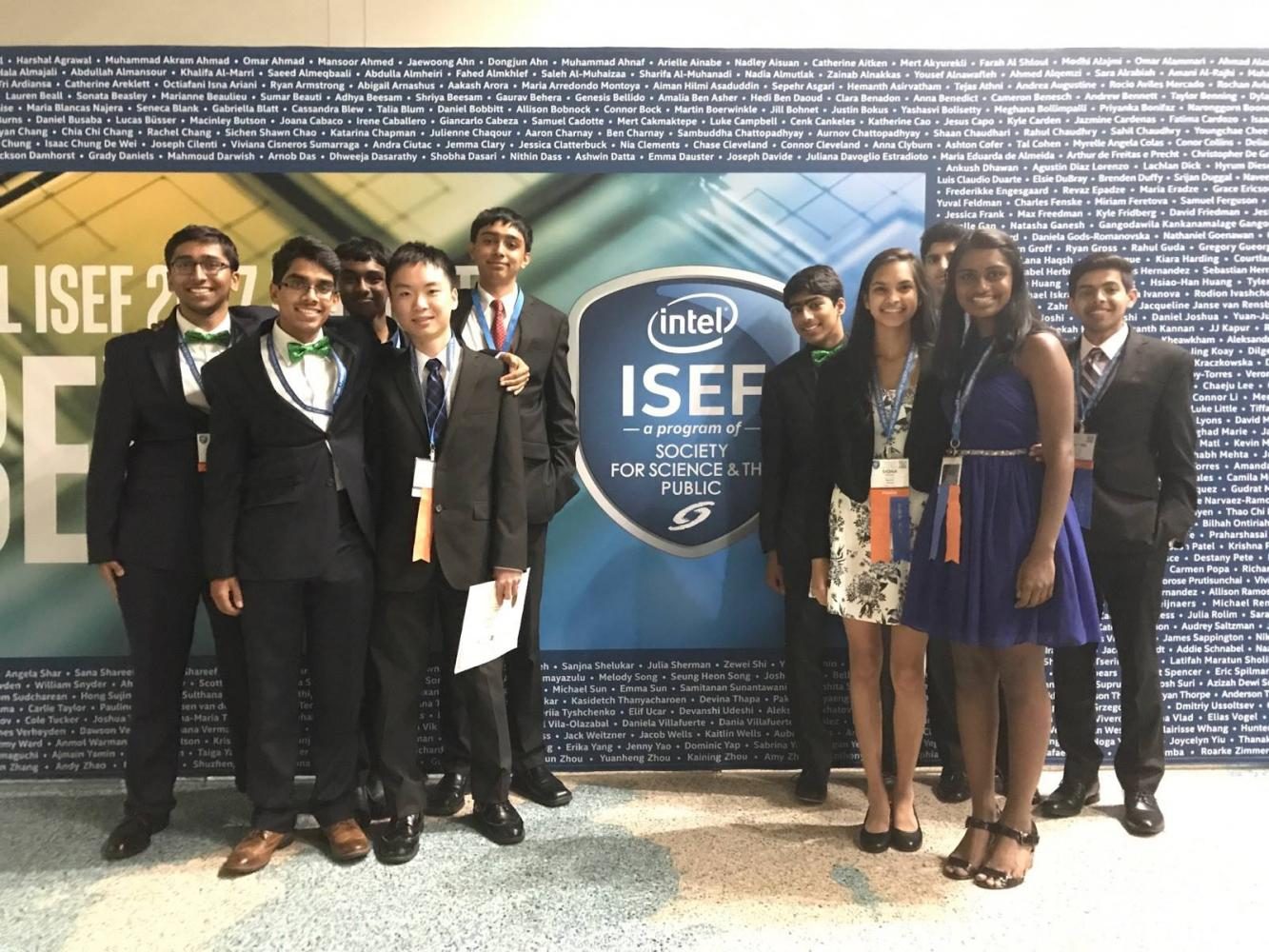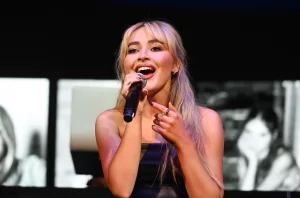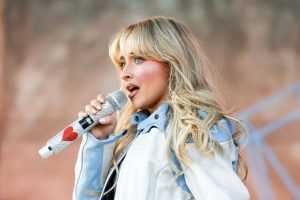Intel International Science and Engineering Fair invites scientists at Jefferson to Los Angeles
Photo Courtesy of Kavya Kopparapu
Jefferson students pose before presenting their projects at ISEF.
June 2, 2017
After showcasing their abilities at an associated science fair, 10 Jefferson students were invited to participate in the Intel International Science and Engineering Fair (ISEF) with over 1700 other students from 78 countries in a symposium and competition in Los Angeles from May 22 to May 26. Winners included junior Kavya Kopparapu, freshman Neeyanth Kopparapu and junior Justin Zhang who won third place in Translational Medical Science, sophomore Siona Prasad who won second place in Earth and Environmental Sciences and senior Prathik Naidu who won first place in Computational Biology and Bioinformatics as well as the Dudley R. Herschbach Stockholm International Youth Science Seminar Award.
Whereas at other national and international science fairs only a select few winners at are invited, a wide diversity of participants are invited from all over the world, costing Intel tens of millions of dollars to run the event every year.
“It’s the largest one I’ve ever been to. All the other science fairs I’ve been to, the best people in those science fairs are the ones who go to ISEF so everyone there is really good because they must’ve qualified from some other place to get there,” Neeyanth Kopparapu said.
Although the event was focused on the students’ research, there were also many science-based activities and opportunities. During opening ceremonies, attendees heard a keynote speech from Manu Prakash, a Stanford bioengineering professor who developed a $2 microscope that can magnify by a factor of 2000, and watched a performance. Later, they introduced themselves to other participants from around the world.
“We had a pin exchange so each of us got half a bag of Virginia pins, and we just walked around trading pins with different countries and states,” Kavya Kopparapu said. “As you walked through that room you [could] hear ten different languages being spoken at the same time. There were STEM schools that came from different countries, so it was interesting to compare how TJ is versus those other schools.”
Throughout ISEF, the students could speak with professionals in various fields of science including Nobel laureates and ISEF alumni, visit booths with the latest technology such as virtual reality headsets and have an evening with free food and rides at Universal Studios which was rented out specifically for ISEF.
“I think that they don’t focus more on the competition because they know that everyone who’s gotten here is already really good. They focus more on an enrichment opportunity where you can learn more about what to do with your research now that you’ve brought it to this type of level and how people have taken it [further],” Kavya Kopparapu said. “Instead of focusing on you’re here to win or here to compete they want to show that you’re here as a part of a community and there are a lot of organizations who are supporting what you are doing.”
Half-way through the week, the students gave presentations on their research for over eight hours to be judged. Despite winning in his category, Naidu believes that science fairs such as these have more value to them than just the awards at the end of the competition.
“My mentality for a lot of these science competitions is to enjoy the experience of showcasing, what it’s like to talk and interact with other young scientists who are interested in your field and also professionals who are very experienced in what you’re doing,” Naidu said. “Of course everyone wants to do well, but I didn’t feel that pressure of trying to compete with others. I just try to enjoy the experience and really make the most of the opportunity to spend a week with some of the most talented people in science.”






